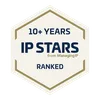Patent Scoring – how to decide on what to protect. A question that start-ups, SMEs and even universities often ask is, “for which of my/our inventions should we pursue patent protection?” #
The short answer is – it is up to the client how they wish to protect their intellectual property. #
However, there are things to consider when making the decision. A method often used by more experienced businesses, which aids with the decision making, is to score the various candidates for intellectual property protection in relation to its value to the business. In theory, this method can apply to all types of intellectual property, but is mainly used for deciding on protection for that intellectual property which can be costly, especially to an SME. As such, the focus here will be on deciding whether to pursue patent protection as this, in general, is the most costly type of intellectual property.
So, how do you go about scoring the value of patent protection? #
There are many factors a company has to consider when thinking about generating a patent scoring system for their inventions. However, there are no hard rules for creating a patent scoring system as each company or individual will have different needs and risks associated with the business and/or inventions. Therefore, the patent scoring will be individual to them.
Nevertheless, we have put together a list of potential scoring categories and criteria that may help in developing your patent scoring system.
The first thing to consider is whether the invention and protection of such invention align with the company’s business strategy. It may seem obvious, but it is a fundamental question as to why you want patent protection for a particular invention. A few example criteria that may be applicable under this strategic alignment of the business are: increasing patent portfolio may be important for investment opportunities; going for patent protection aligns with core technology and will aid in further developments of such invention; the invention is going to be of great financial benefit to the company; the company wants to control the particular market with their invention; or applying for patent protection falls within the cost projection for the year. Establishing the business’s fundamental strategic values is important, and thus using this for patent scoring is also important.
Secondly, something that is always important to consider is the market risk. For example, does the invention belong to a growing market, or will it aid in blocking a potential competitor within that market? Again, is the invention going to benefit the company, or is it going into a dead-end market.
Technology risk is another crucial aspect that may be used to decide on whether to seek patent protection for an invention. For example, if the improvements in technology are proven and considerable, then the risk may be low; or if the improvements in technology are minor but are important, they may bring considerable benefit to the company.
Another category often chosen by businesses is to consider the IP specifics of the invention. For example, is the invention part of the business’s core IP, are there customers or licensees already identified, are there infringement risks, would it be better if the invention was kept as a trade secret, etc.
Once the categories and criteria have been established, the actual scoring must be assigned to the categories. It may be, for example, each category has a mark out of 5, with the number awarded a reflection of the criteria that the invention meets within that category. It may be that an invention does not have market potential so that it would score low in the market risk category, e.g. 2, but it is vital for obtaining future investments so that it would score high in strategic alignment, e.g. 5. An example patent scoring table is provided below. Once the scoring has been assigned for a particular invention, the last thing to consider is the threshold at which you choose to apply for patent protection. Taking the example in the table, a possible threshold value could be 75% which would mean an invention scoring 16 and up would be progressed to a patent application. However, a larger, well-established company may opt for a threshold of 50% as they have more financial freedom to pursue more inventions to patent applications. Therefore, in the example, anything above ten would be progressed to a patent application.
| Scoring Category | Invention 1 | Invention 2 | Invention 3 |
| Strategic Alignment | 3 | 4 | 2 |
| Market Risk | 2 | 5 | 3 |
| Technology Risk | 1 | 2 | 5 |
| IP Specific | 4 | 5 | 1 |
| Total | 10 | 16 | 11 |
As mentioned above, each company may have a different approach to scoring their patents, and each patent scoring may be unique to that company’s values and needs. The scoring system may also develop and change as the business develops and grows. Therefore it is always good to reflect on your patent portfolio and review your patent scoring strategies.
If you are looking for help with developing your patent portfolio and scoring your inventions, please do not hesitate to contact us at Murgitroyd.
I hope you found this information helpful and provides food for thought for your patent scoring system.





















